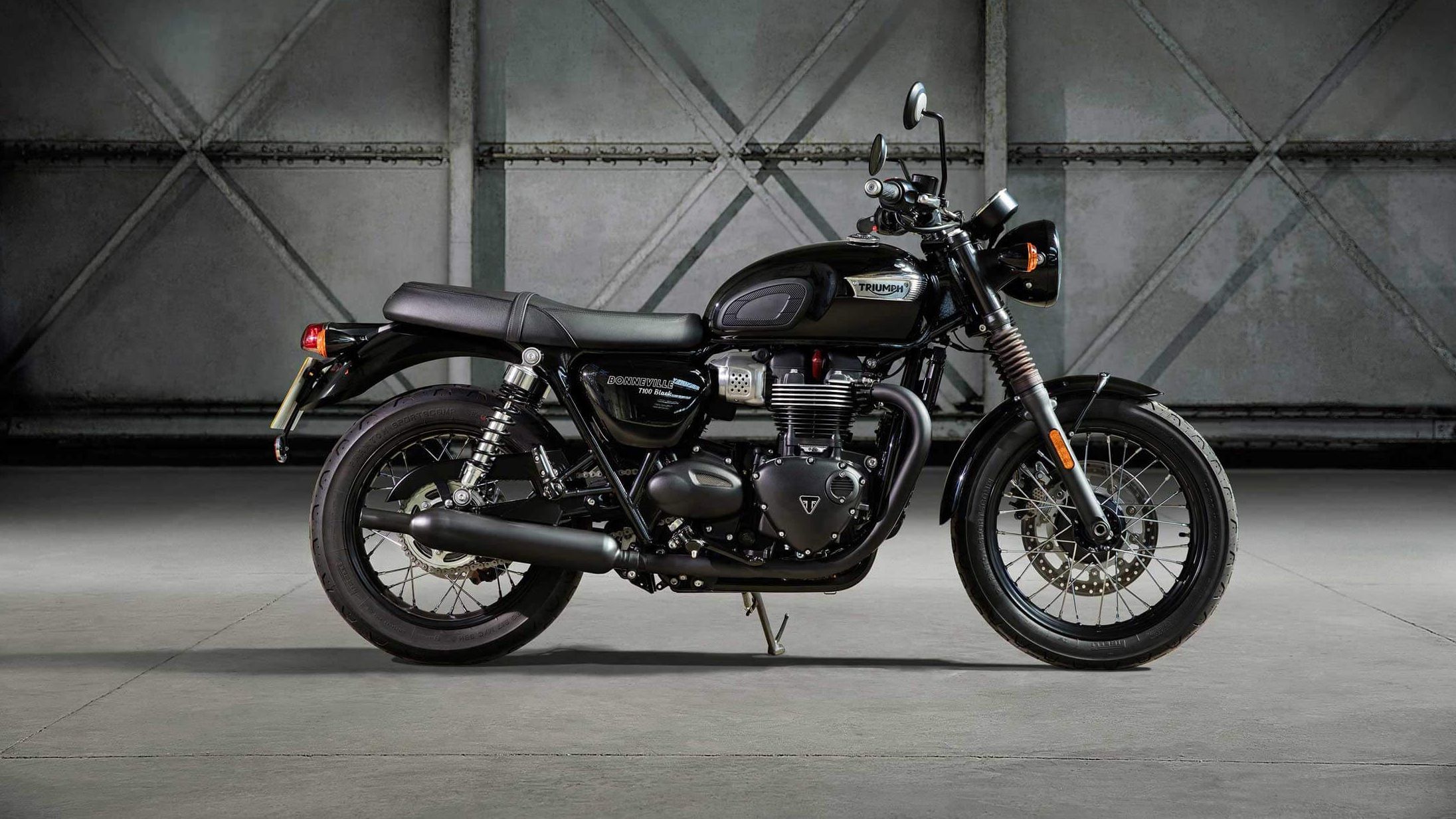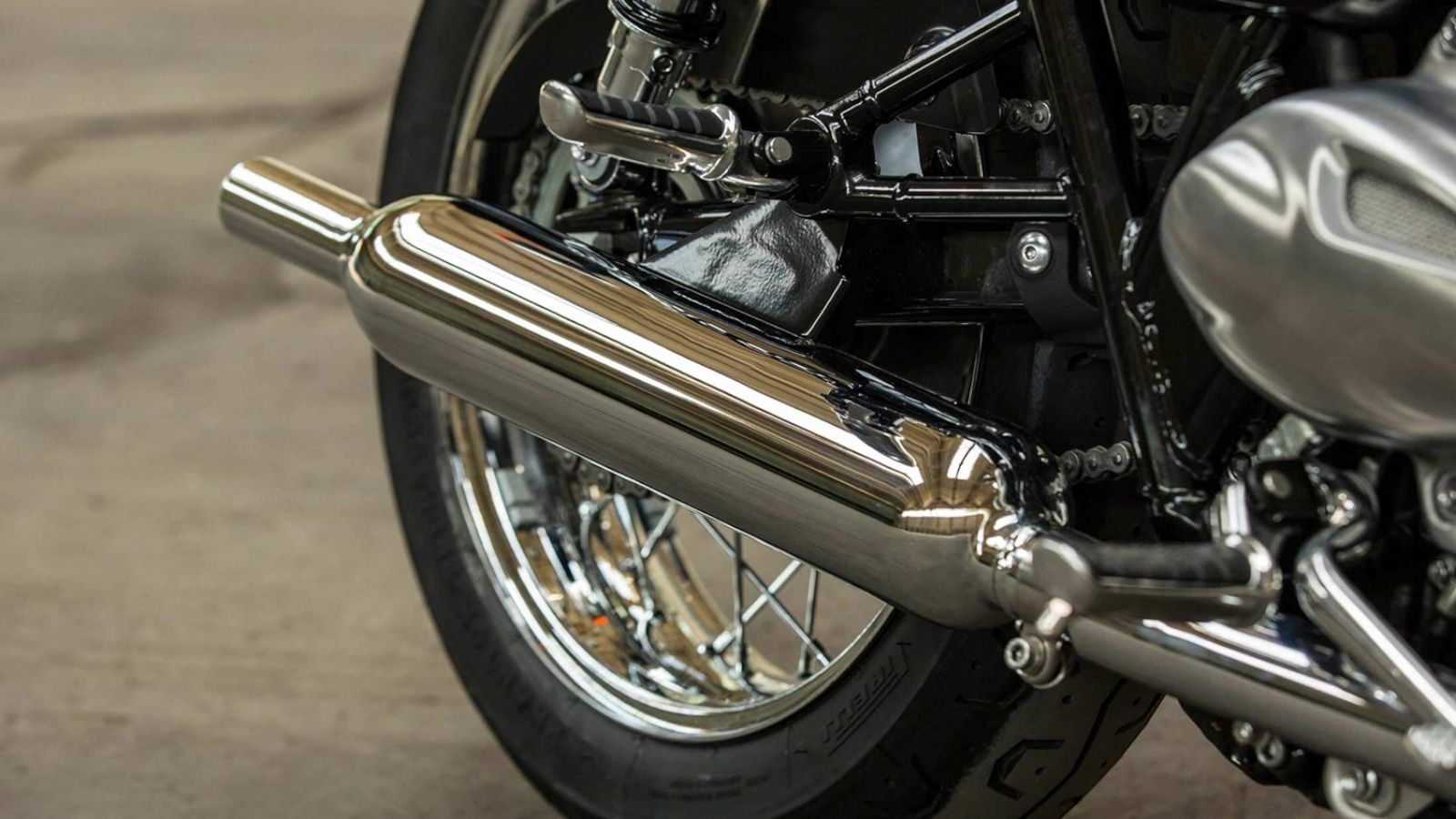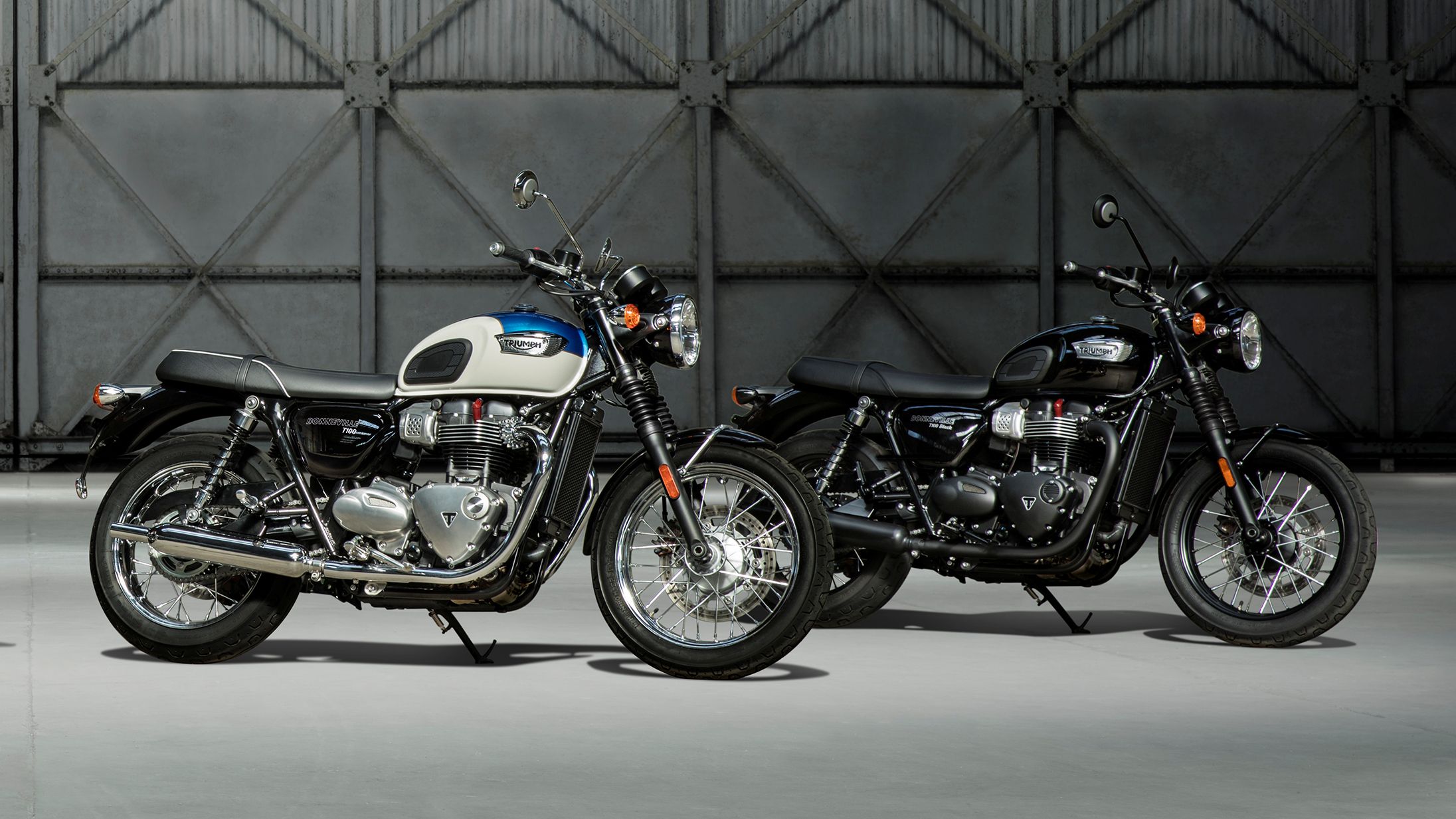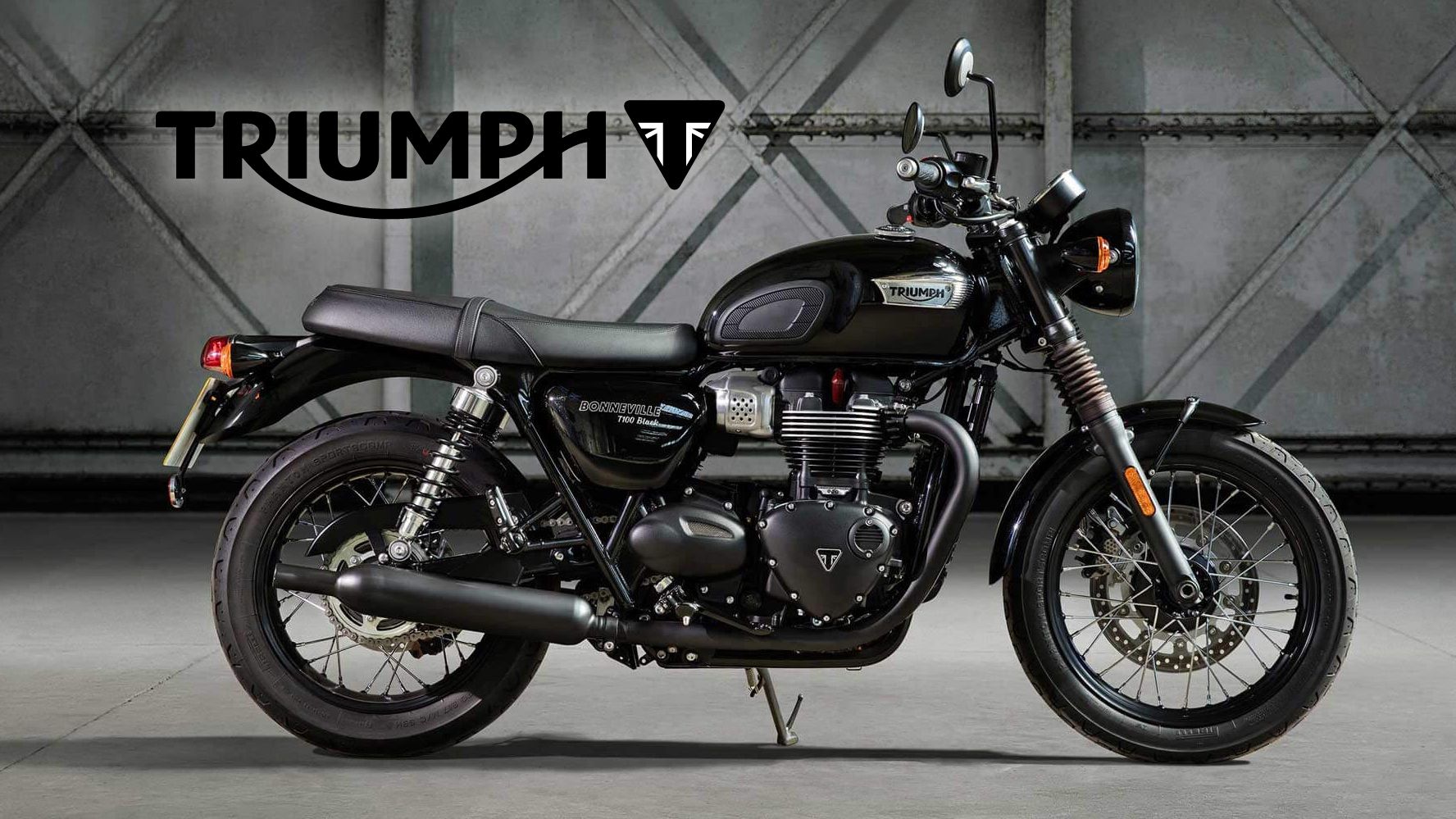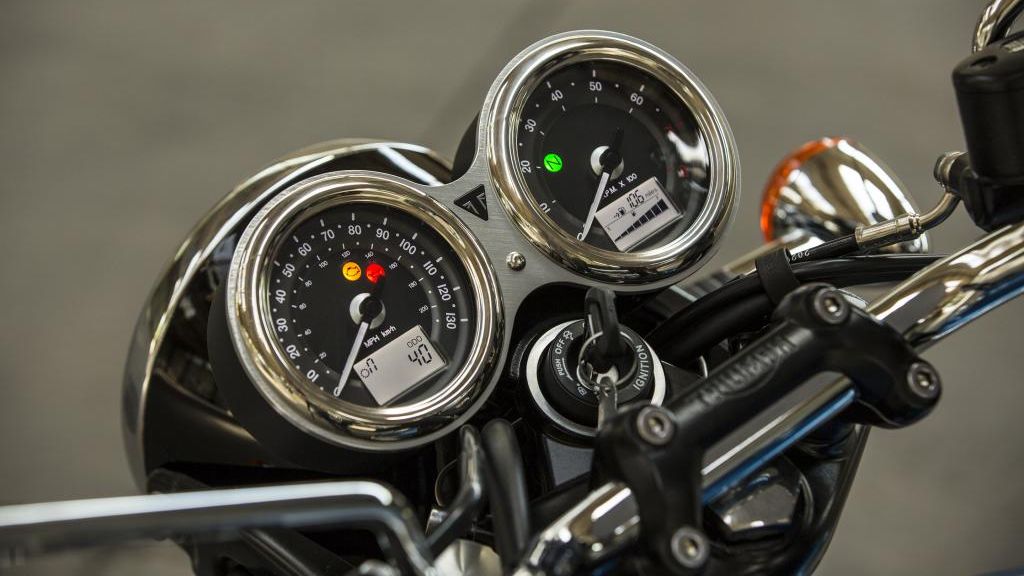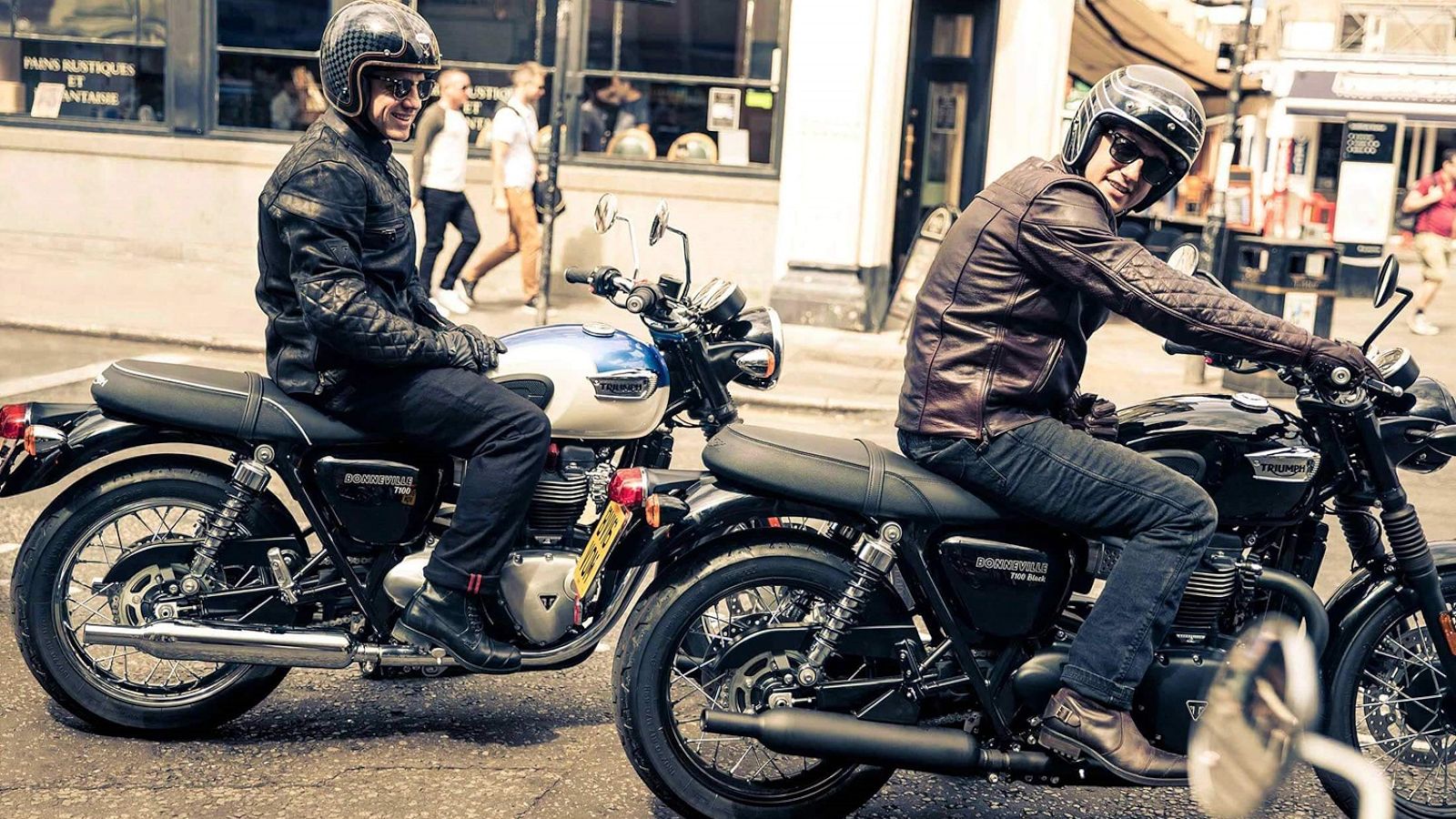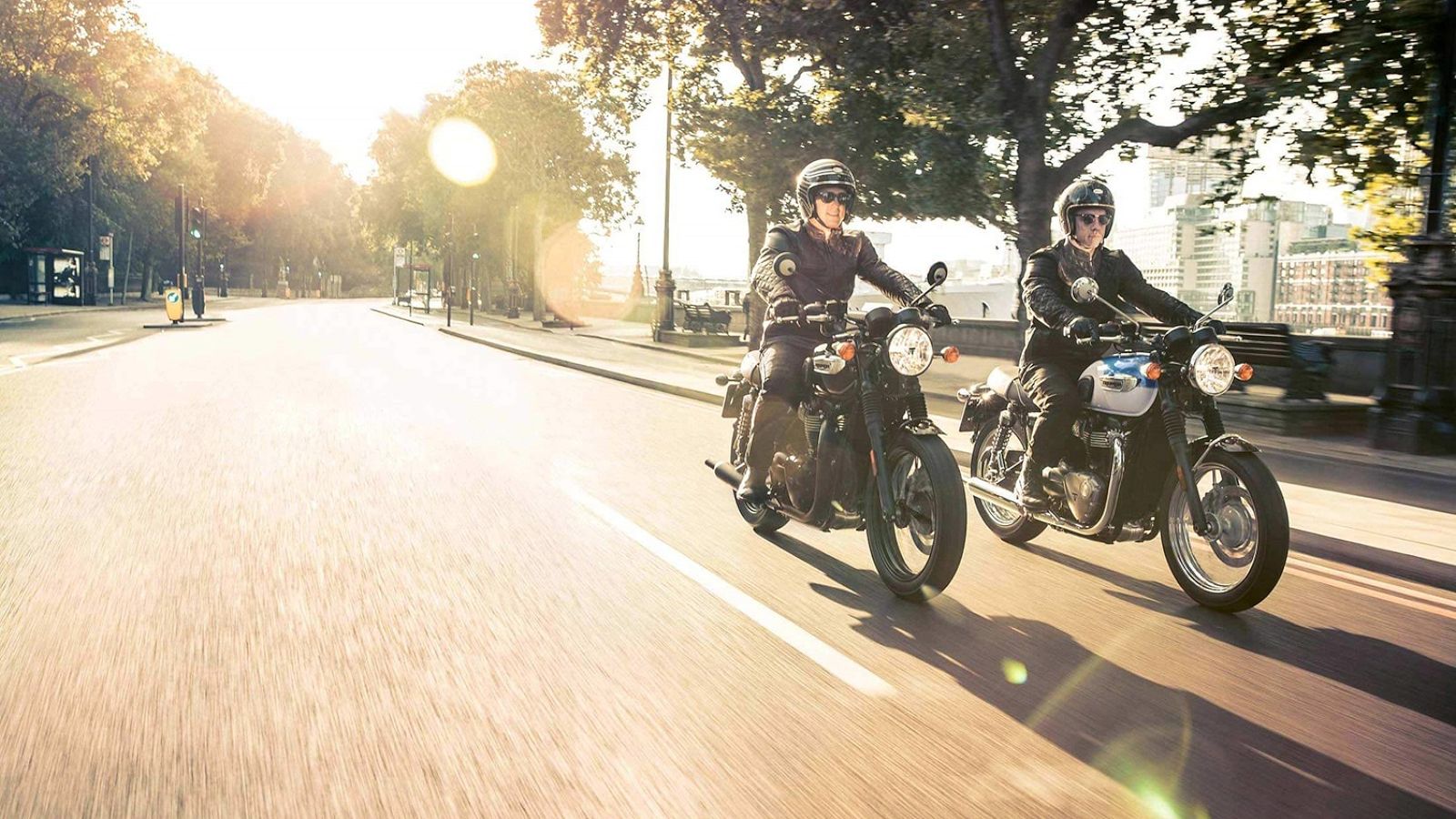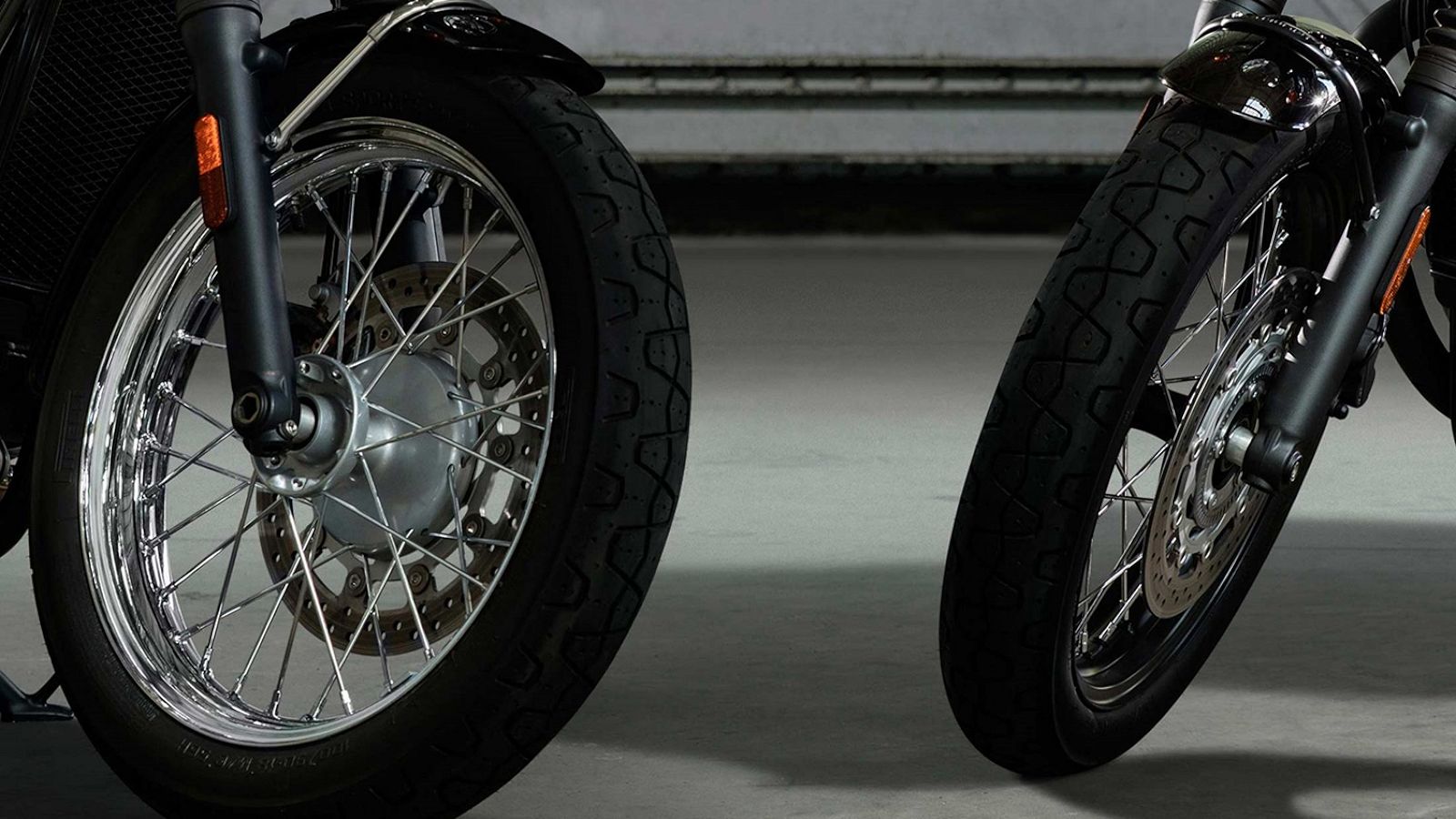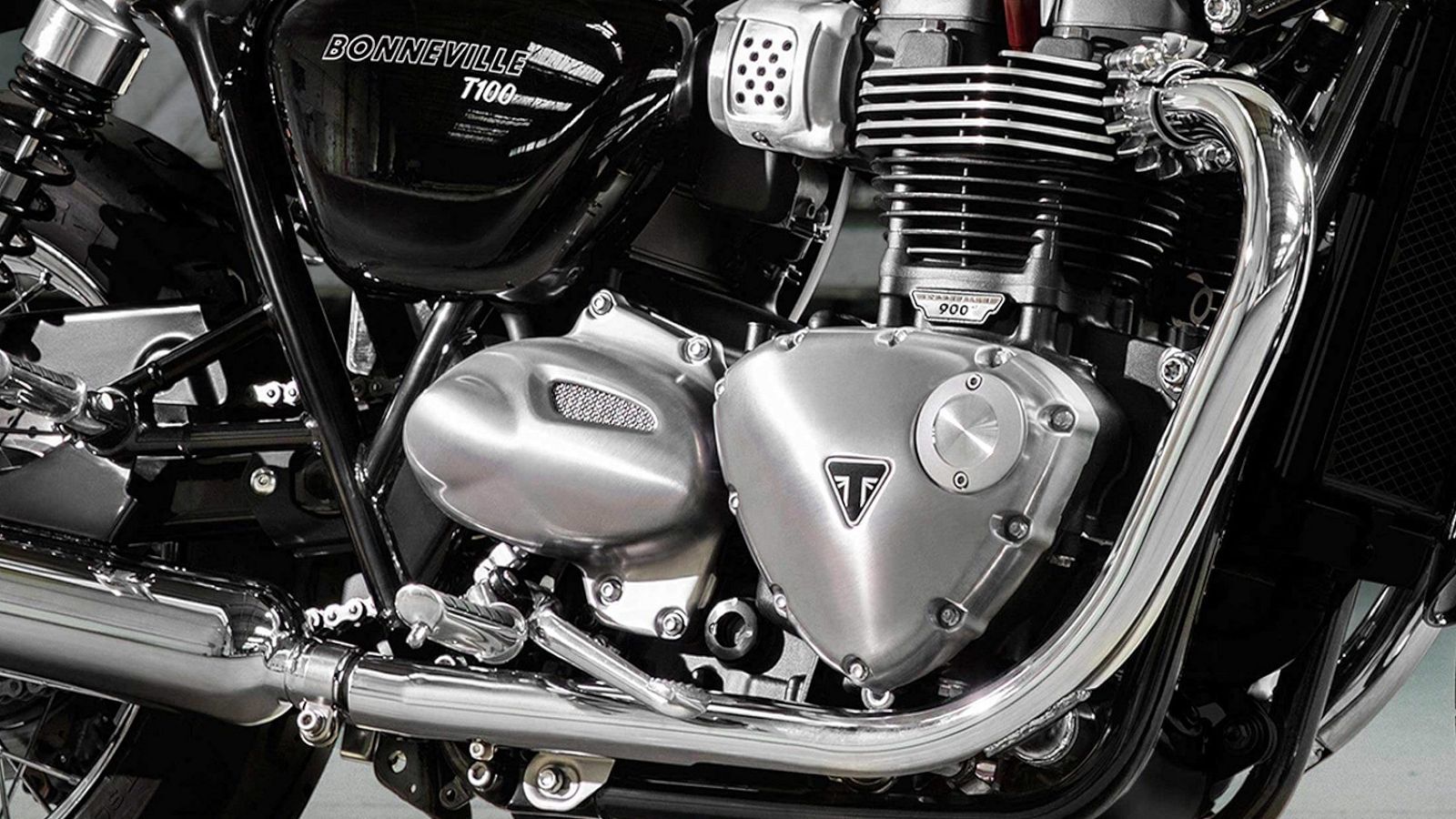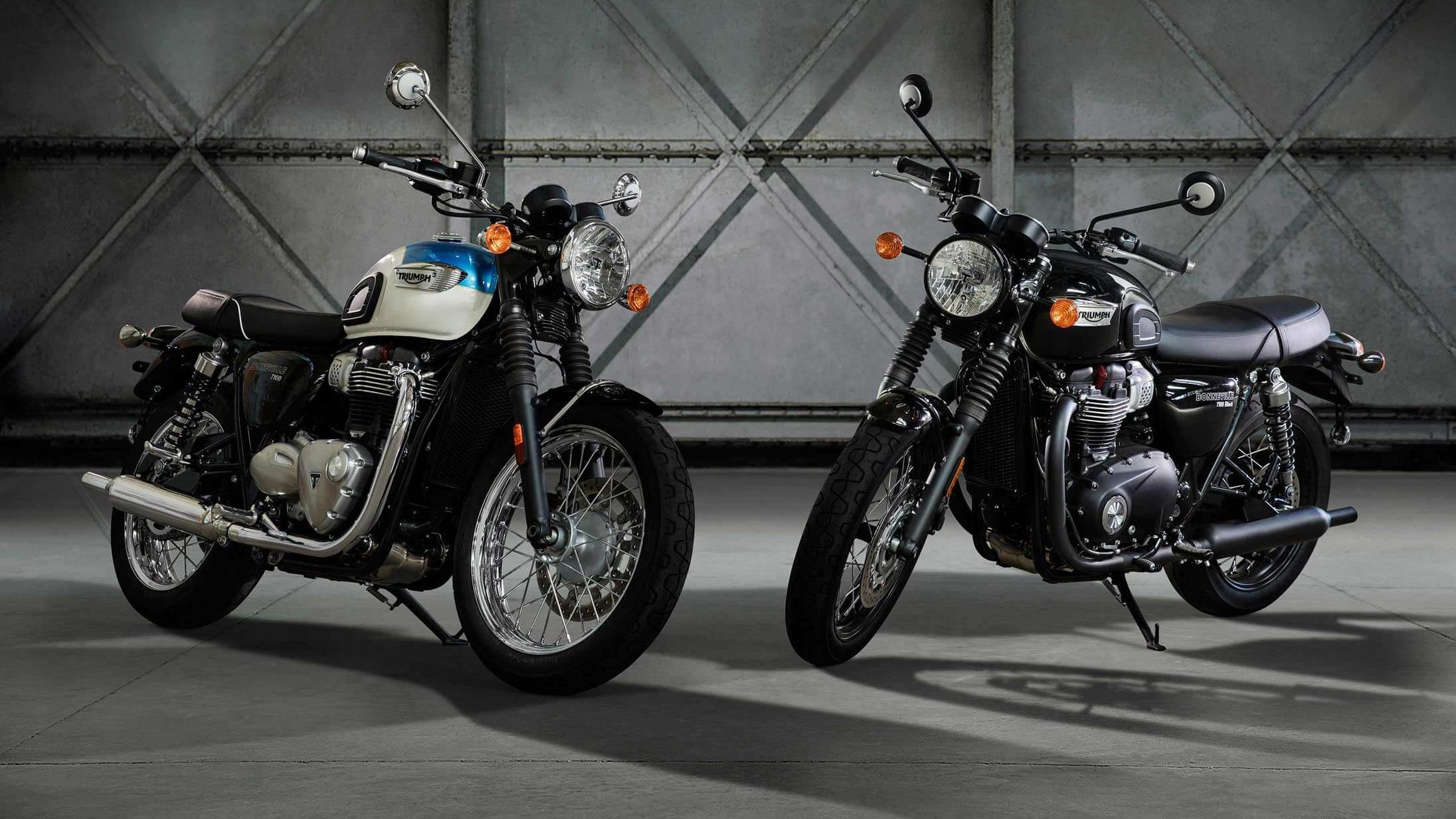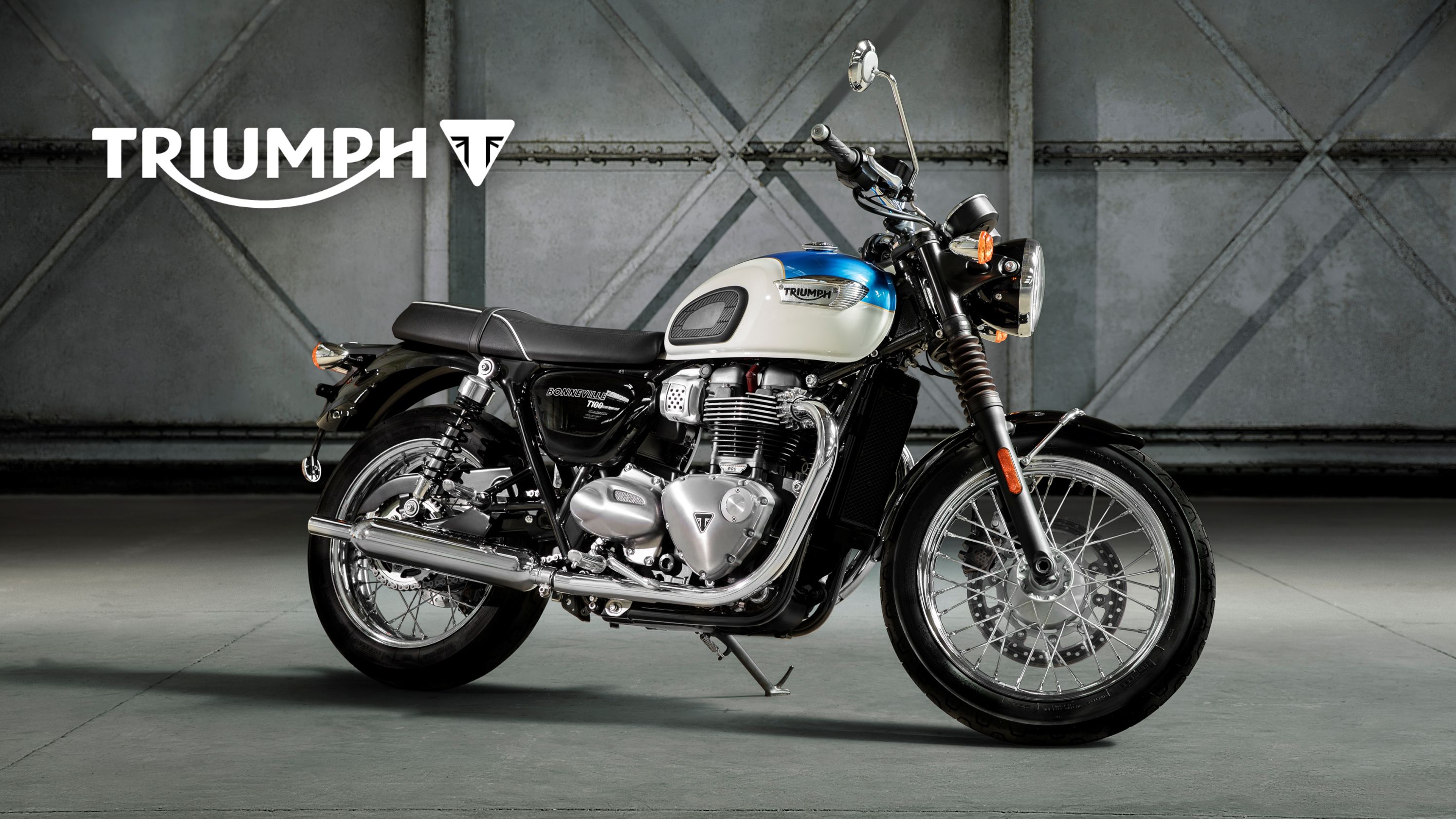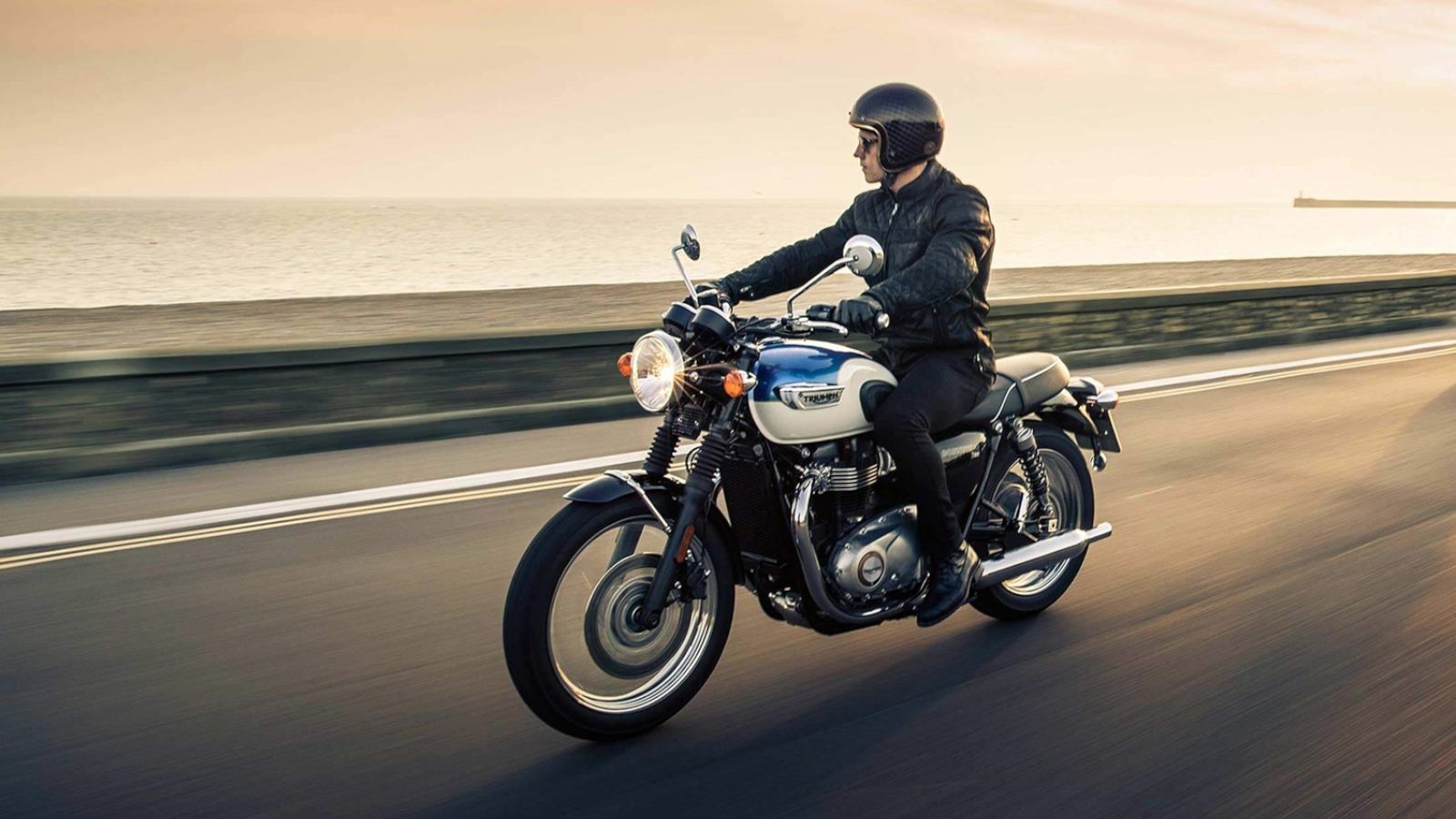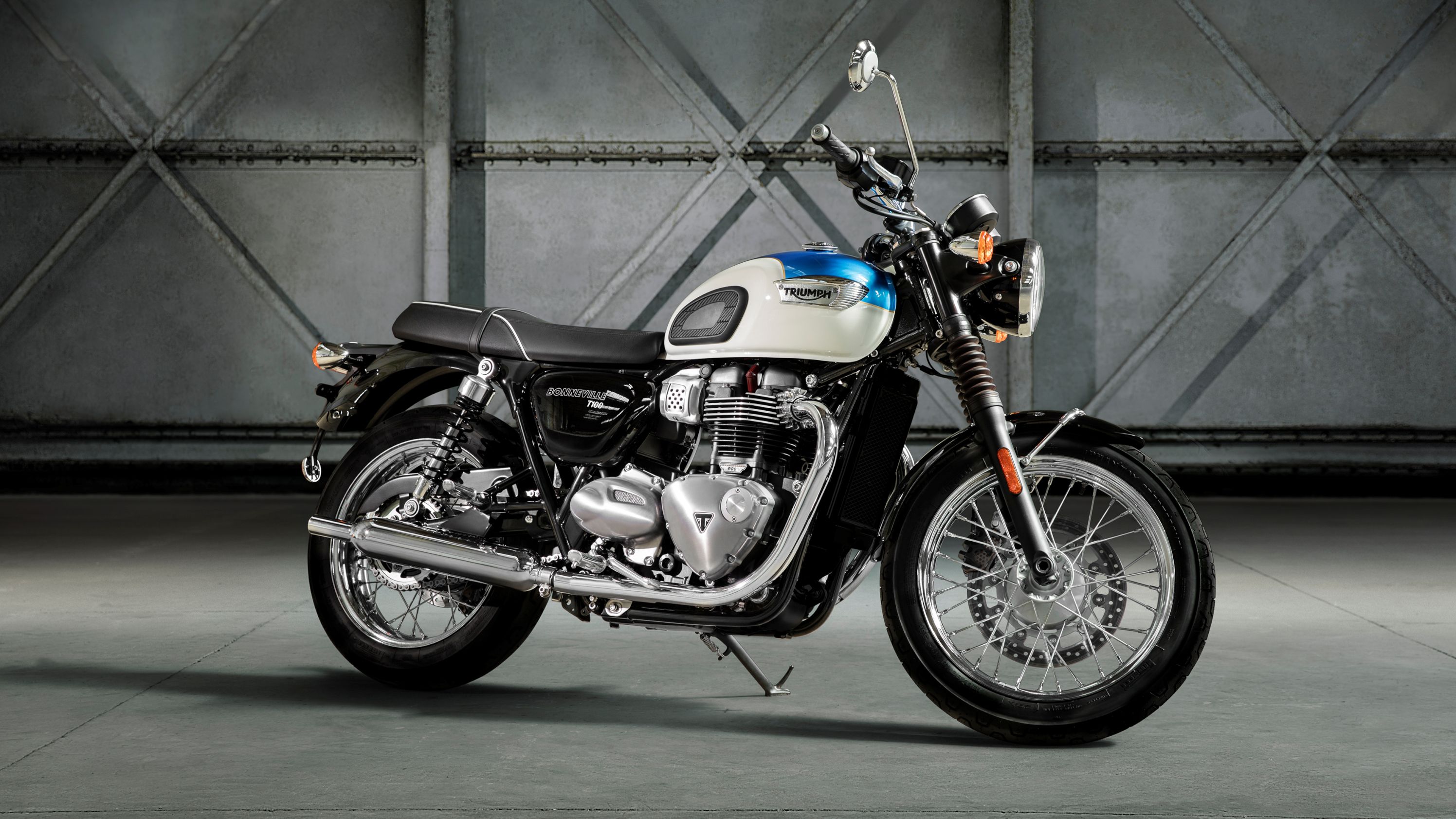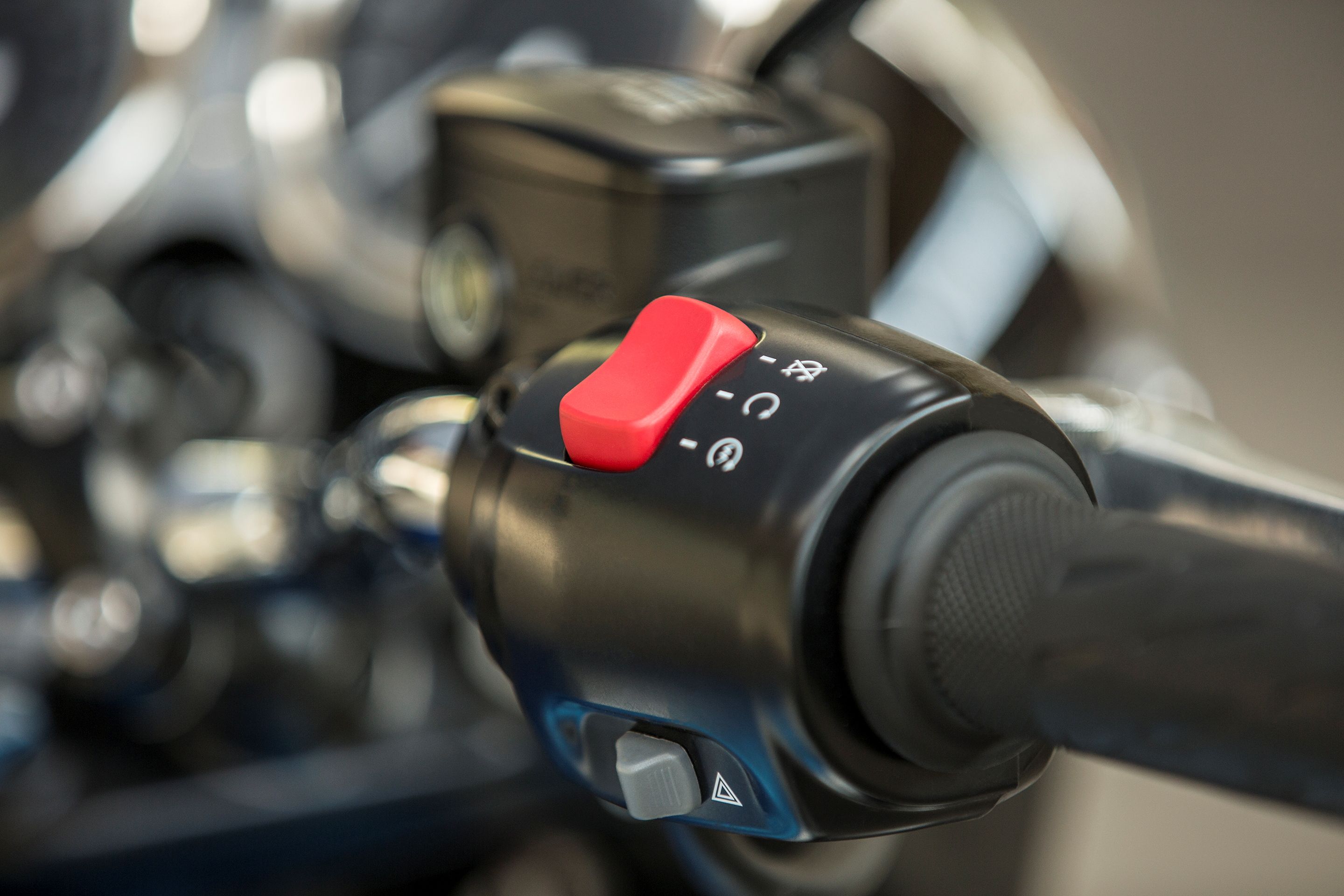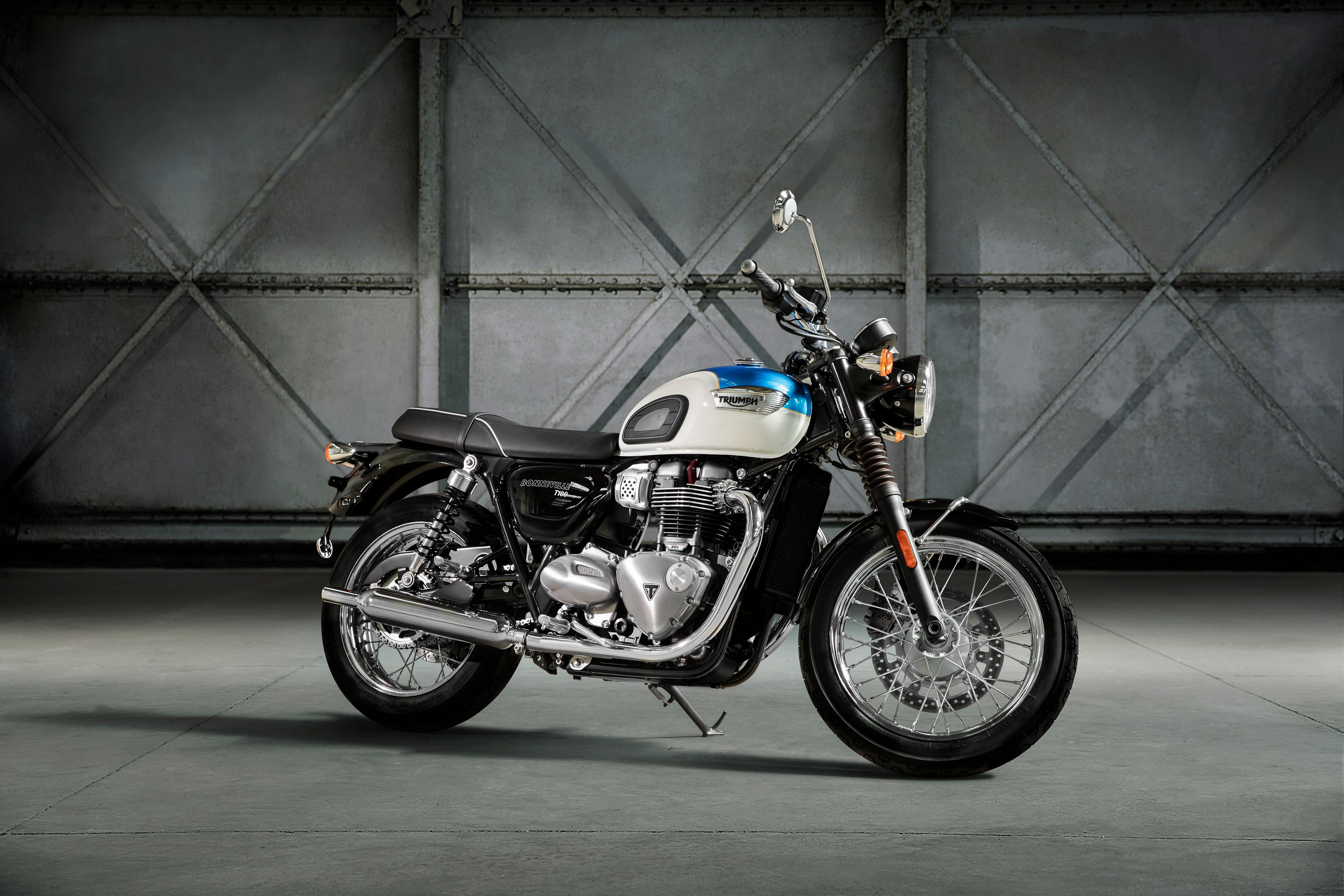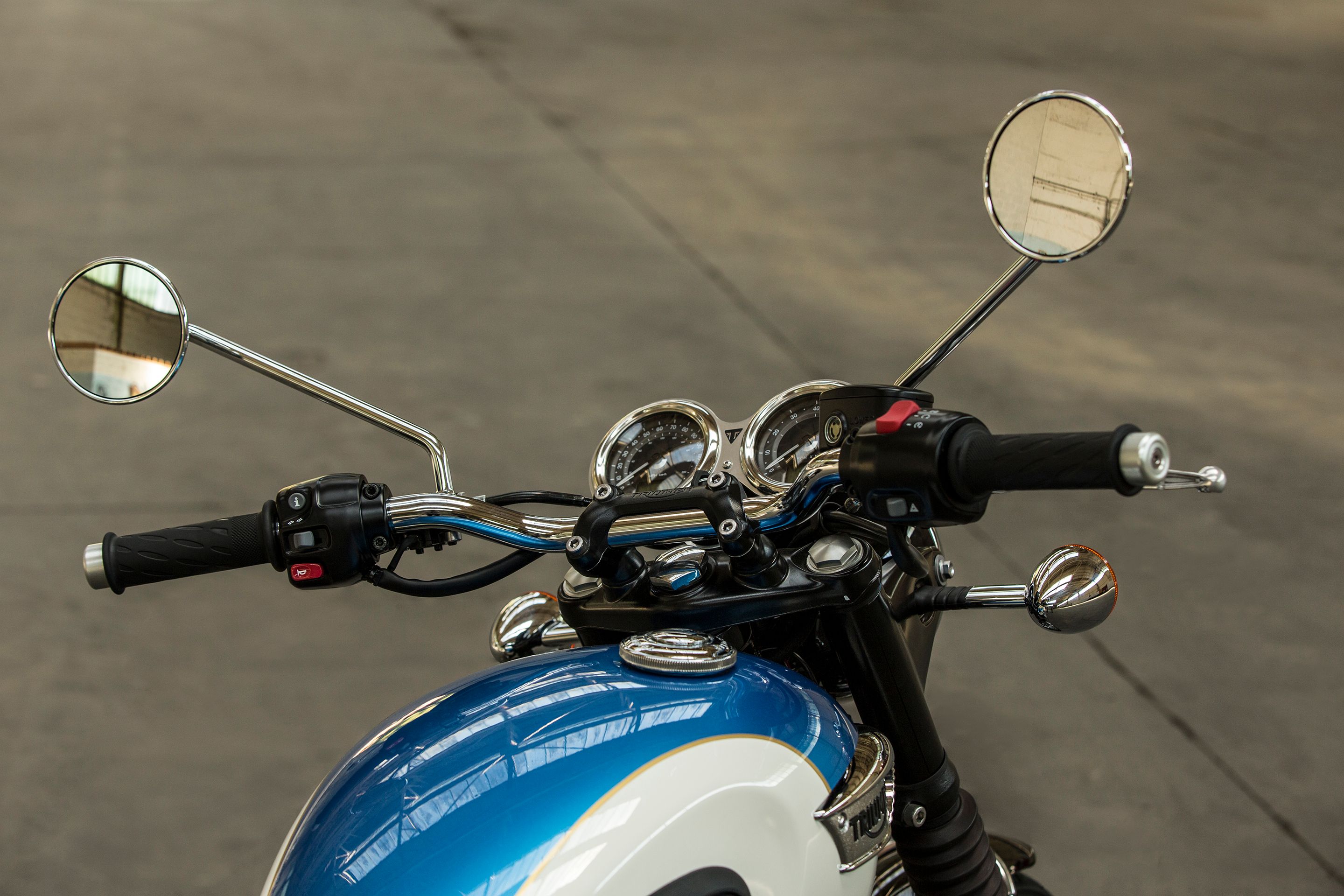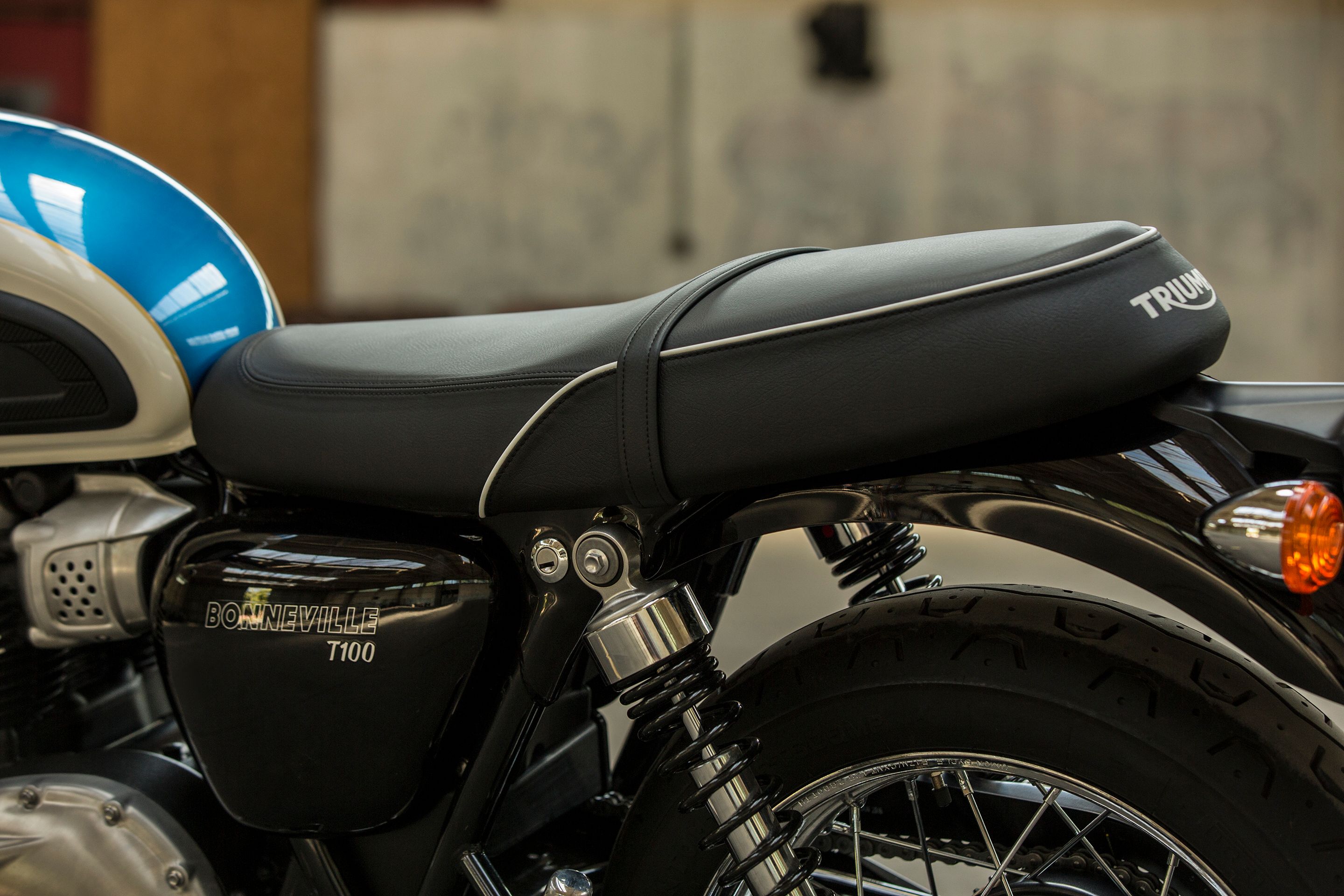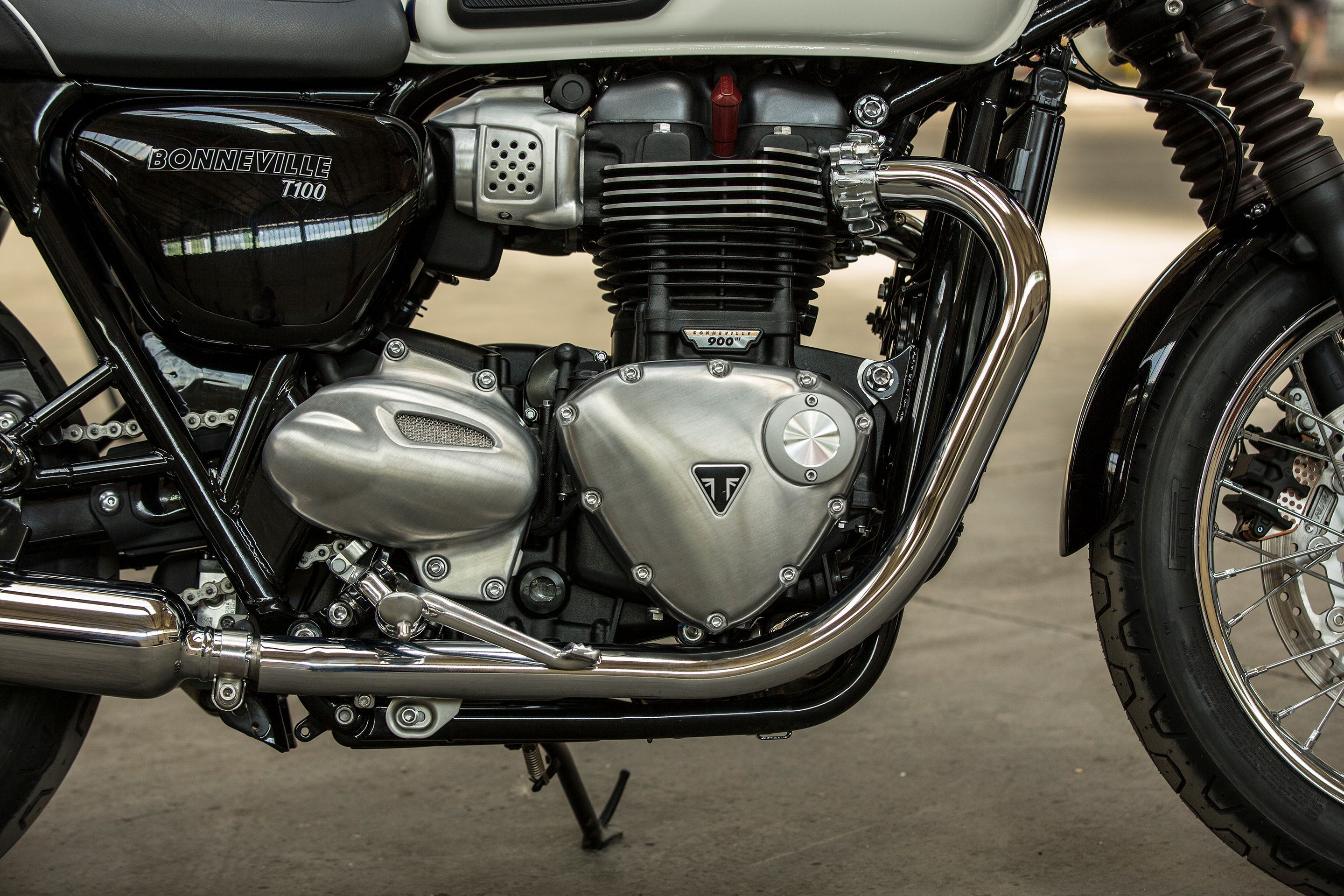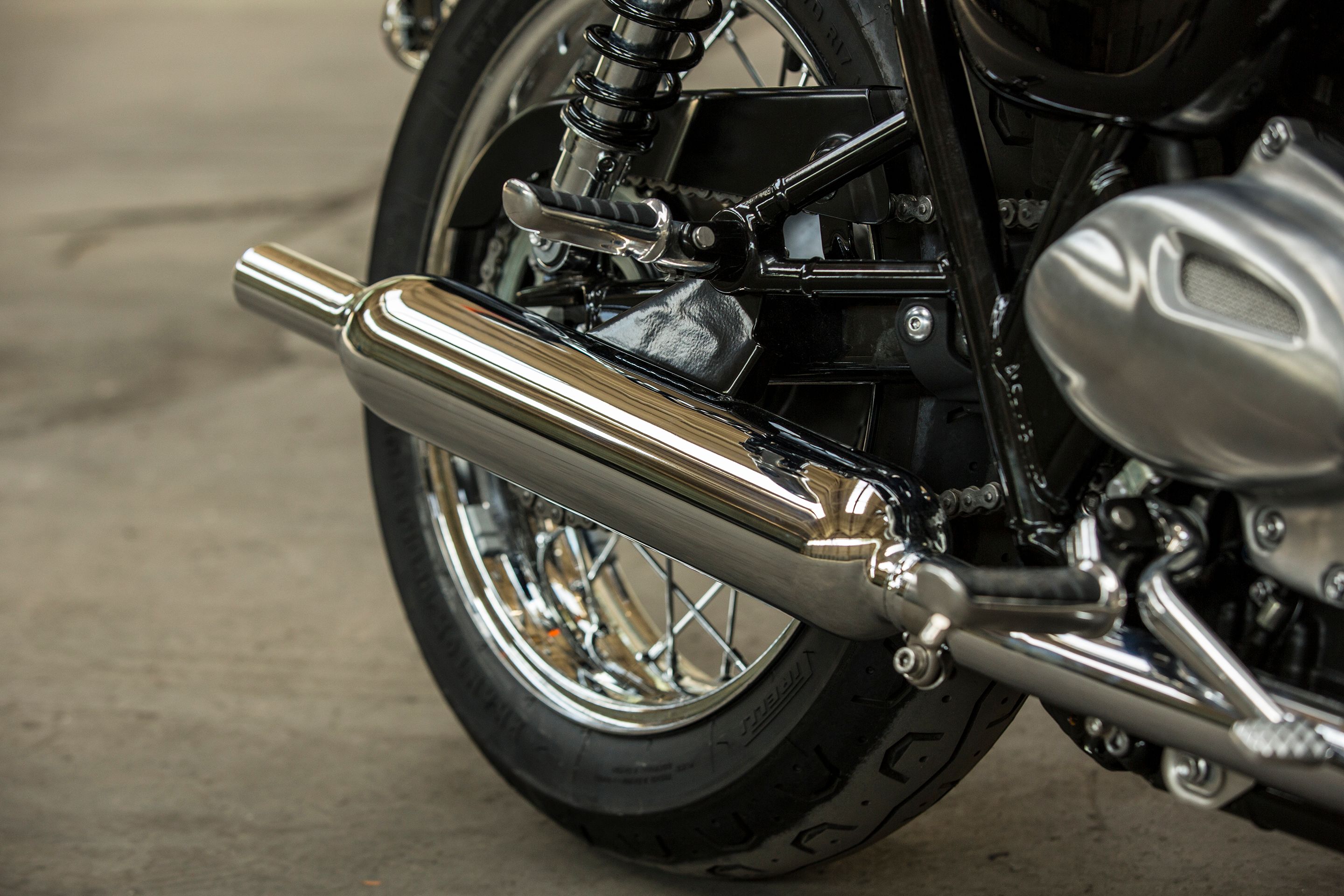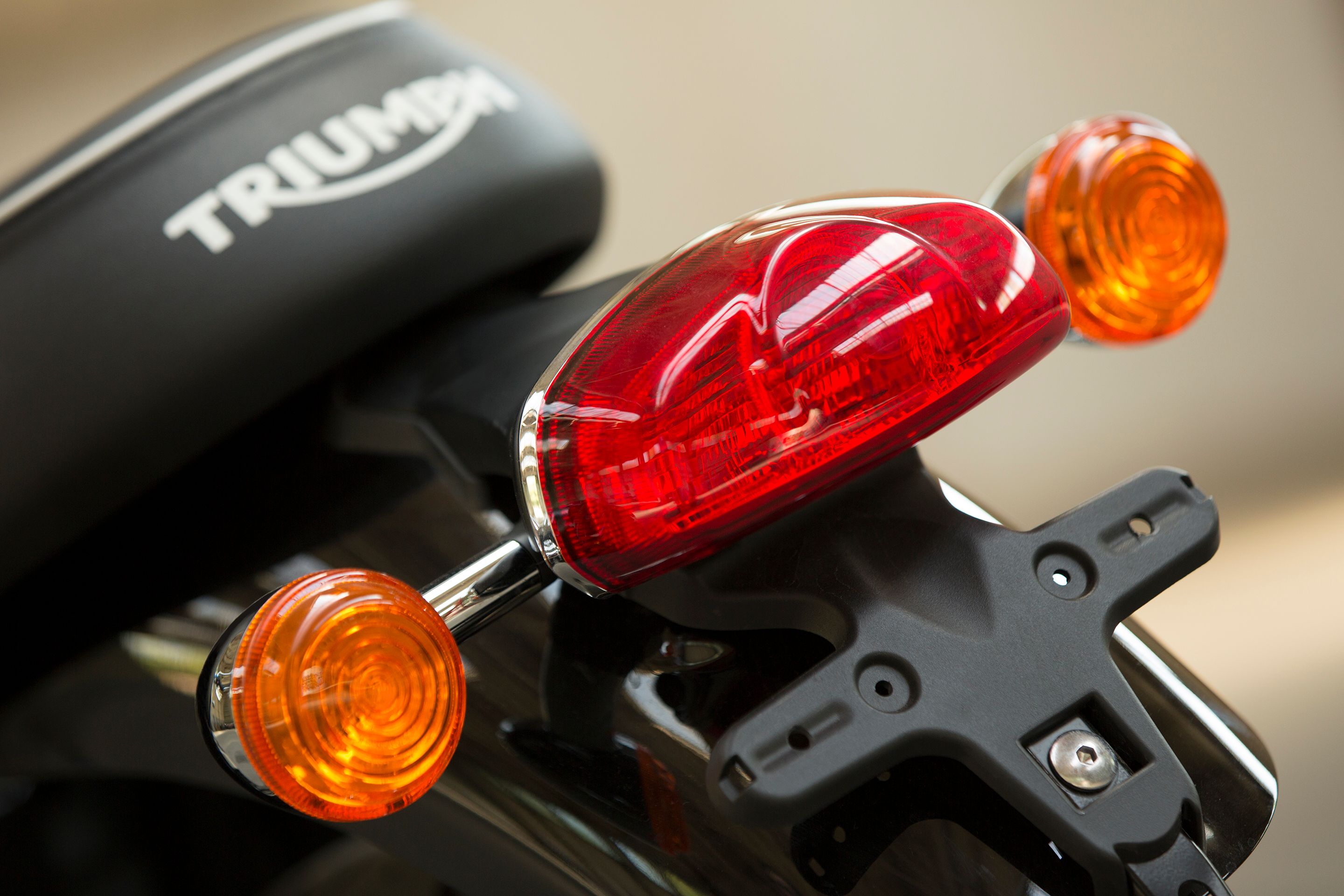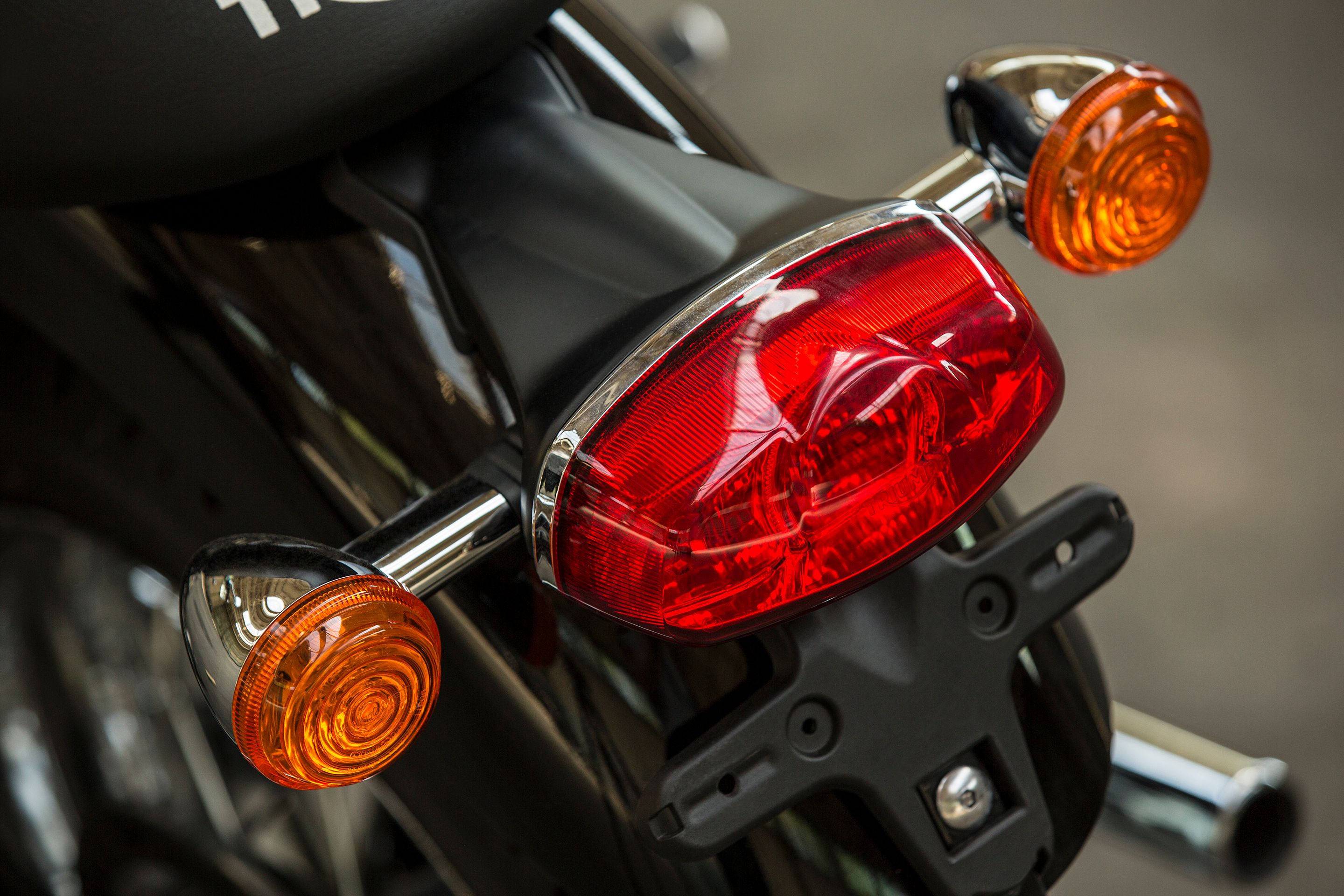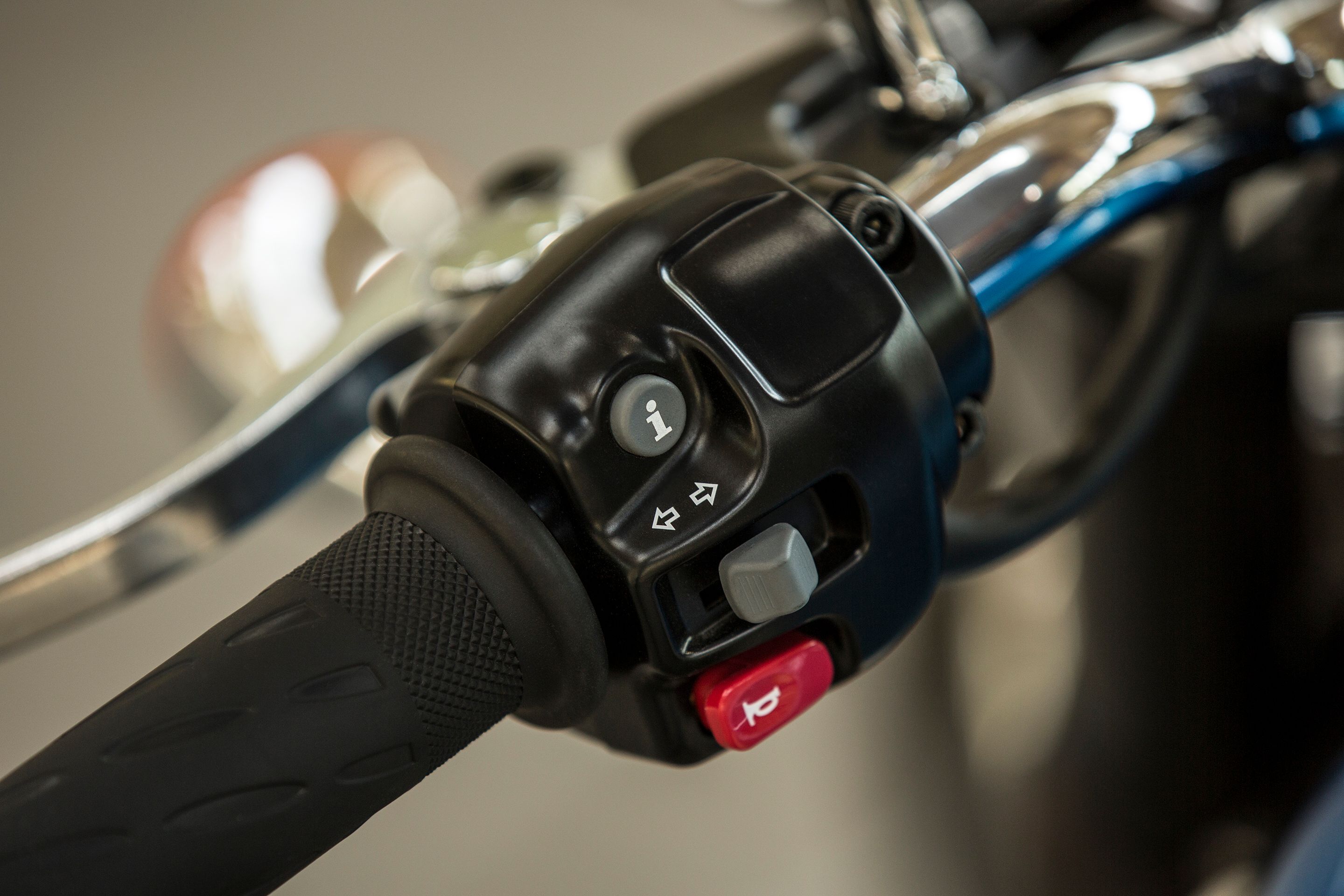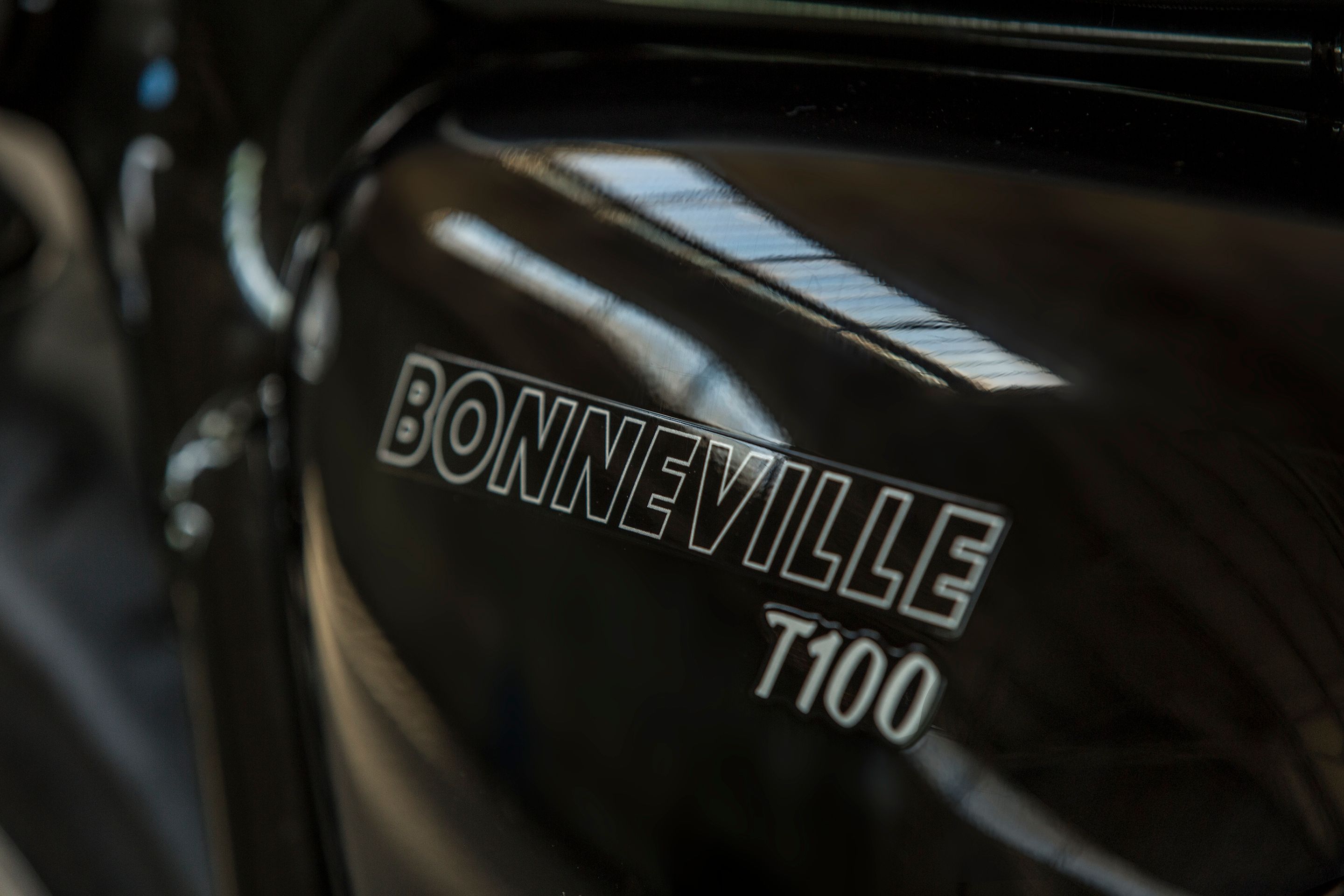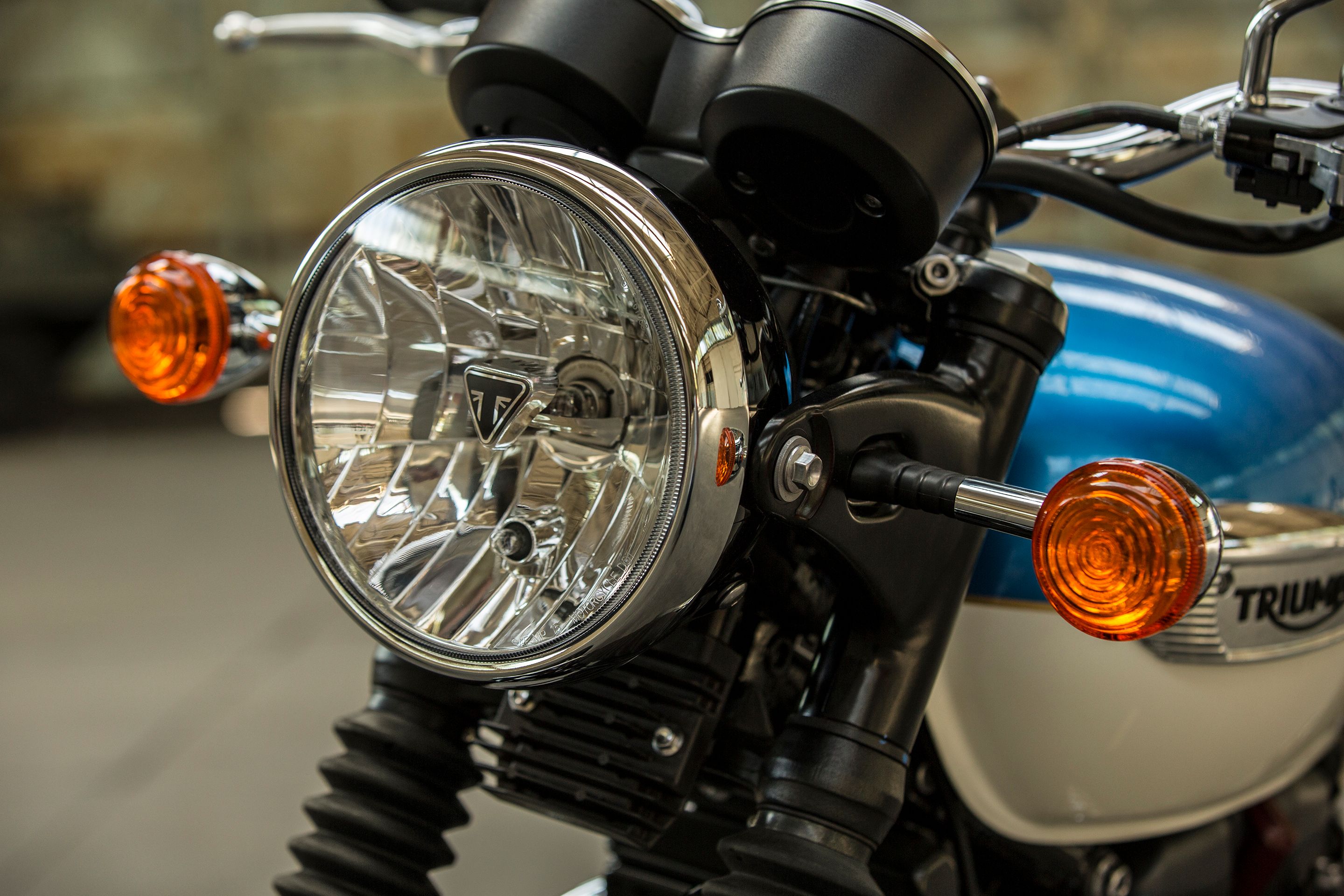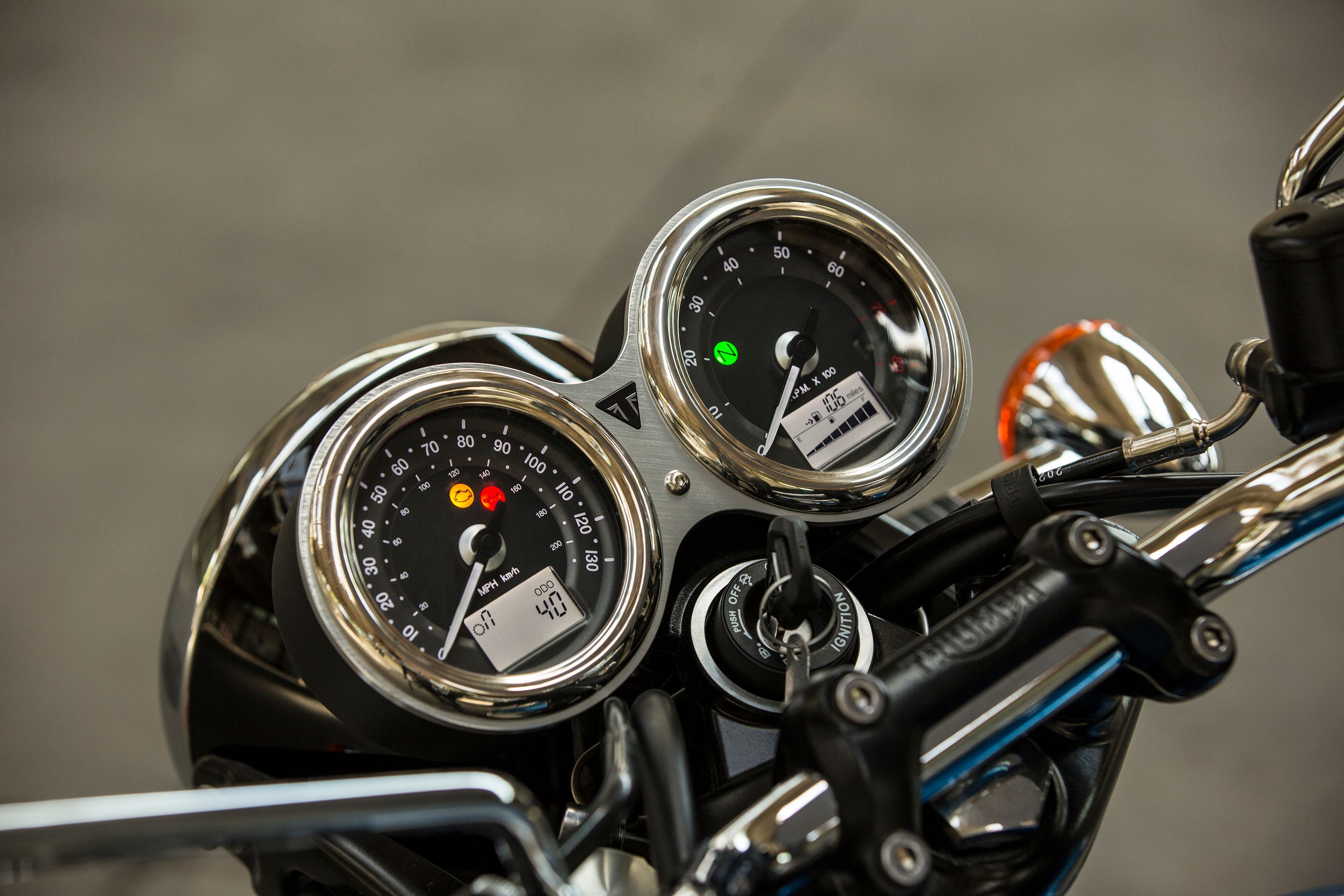Triumph started the Bonneville legacy all the way back in 1959, and it is a name that the factory is still taking to the bank today. The newly-repowered “Bonnie” T100 and T100 Black boast a 900 cc mill set in what is more or less a T120 chassis. At 59 horsepower, the T100 plant makes for a newbie-friendly riding experience while the weight savings around the bike imparts a nimble nature that you don't really feel with the big-brother T120. Classic looks abound on the base model, while the “Black” takes a turn down memory lane to the heyday of garage custom standards with a large dose of blackout treatment for a more sinister look. So, not only do we have a bit of a spread on design, but we also have a balanced machine that can introduce folks to the joys of riding while remaining fun enough to keep experienced riders interested. If that sounds good to you, read on to see what else the T100 family has to offer.
2016 - 2020 Triumph Bonneville T100 - T100 Black
- Make: Array
- Model: 2016 - 2020 Triumph Bonneville T100 - T100 Black
- Engine/Motor: Parallel Twin
Triumph Bonneville T100 Design
Using a storied name such as Bonneville for a contemporary model line brings with it a certain responsibility to past models, and the factory seems to have nailed it with this pair. Seriously, in the dictionary under “British Standard” there should be a picture of one of these. The factory borrowed heavily from the '59 Bonnie while drawing up the T100 (and T120s), and why not? It's one of the most recognized silhouettes in the motorcycling world, and it just never seems to go out of style.
A good old-fashioned wire wheel finished bright leads the way on the base model while the Black runs a blackout spoked rim. Both models run a black front fender regardless of tank color to go with the black forks, gaiters and headlight can. Only the chrome mirrors, headlamp bezel, bullet turn signal housings and fender support set the base apart from the Black in the front-end hardware. Moving aft, the flylines play across the classic fuel tank design that comes complete with the knee pads mounted within the tank indents to make the connection to previous racing glories, and a chrome tank badge. A bench seat finishes the upper lines over the black rear fender, and as you might expect, the base T100 has a bit of bling in back with chrome turn-signal housings, but shares a blackout taillamp housing with its dark-soul sibling.
Naturally, the rear-wheel treatment matches its respective front, but both models run chrome shocks with blackout springs for a little continuity across the board. Whether they did that to keep the Black from losing too many details in all the darkness or just to keep costs down is anybody's guess, but the shocks join the tank badge, fuel cap and throttle-body covers as the only bright spots on the machine. No, the highlights reflecting off the painted sheet metal do not really count as bling.
On top of all that, the blackout treatment continues into the drivetrain with dark headers and blackout peashooter silencers to match the blackened engine cases and covers. Yeah, it's a lot, but one should never be too subtle for one's audience, after all.
Triumph Bonneville T100 Chassis
The classic standard shape starts on a time-tested, double-downtube / double-cradle frame made from tubular-steel members; a construction method that continues back into the yoke-style swingarm. A steering-stem angle of 25.5 degrees gives us 4.1 inches of trail and a 57.1-inch wheelbase between the 18-inch front wheel and the 17-inch rear with a wide steering sweep that makes U-turns a breeze, 'cause ain't nobody got time for three-point turns (or more) on a busy road.
The factory keeps the steering light by keeping the front end light; namely by dropping down to a single front brake as opposed to the dual binders like on the T120. This makes for an easy feel at the grips and adds some enthusiasm to its cornering behavior. You'd better curb some of that enthusiasm on left-hand turns though; the kickstand scrapes pretty early into the lean, so plan accordingly, ya know, unless you're trying to throw some sparks.
Seat height falls out at 31.1 inches high, and that is liable to be comfortable for a wide range of body types. The seat itself is pretty plush too, so unlike some manufacturers (*cough* KTM, ahem) Triumph's bench seat probably couldn't be used as some sort of enhanced interrogation tool by the CIA or anything.
KYB products support both ends of the ride with a pair of 41 mm forks up front and a brace of coil-over shocks in back. The rear shocks get the only adjustments with the obligatory variable spring preload, but both ends enjoy a full 4.72 inches of wheel travel. While that isn't enough for anything rougher than light terrain or poorly-maintained roads, it's certainly enough to make your daily commute a fairly pleasant experience.
Twin pot Nissin calipers bite the single, 310 mm front disc and 255 mm rear with a non-switchable ABS to help prevent wheel lockup whether you want it to or not, so you can forget about controlled slides if you're into that kind of thing.
|
Frame: |
Tubular steel twin cradle |
|
Rake: |
25.5º |
|
Trail: |
4.1in (104 mm) |
|
Swingarm: |
Twin-sided, tubular steel |
|
Front Suspension: |
KYB 41 mm forks, 120 mm travel |
|
Rear Suspension: |
KYB twin shocks with adjustable preload, 120 mm rear wheel travel |
|
Front Wheel: |
Wire 32-spoke – Steel Rims. 18 x 2.75in |
|
Rear Wheel: |
Wire 32-spoke – Steel Rims. 17 x 4.25in |
|
Front Tire: |
100/90-18 |
|
Rear Tire: |
150/70-R17 |
|
Brakes Front: |
Single 310 mm floating disc, Nissin 2-piston floating caliper, ABS |
|
Brakes Rear: |
Single 255 mm disc, Nissin 2-piston floating caliper, ABS |
Triumph Bonneville T100 Drivetrain
All of the above is just the setting for the gem that is the new 900 cc Bonneville engine. Dubbed a “high torque” motor, the new version cranks out a total of 59 pound-feet of torque at a low 3,230 rpm -- 18-percent more than its predecessor -- backed up by 55 horsepower at 5,900 rpm for unintimidating and manageable power delivery. Triumph leaves the variable power rider modes on the shelf, but does work in a traction control system for another selling point to the novice-rider sector.
This power comes from the classic parallel-twin configuration that made Triumph famous, though the 270-degree firing offset thankfully give the mill a bit of a lope while shedding the angry-lawnmower racket from the old “twingle” days. An 84.6 mm bore and 80 mm stroke leaves the mill only slightly oversquare, and it runs a 10.55-to-1 compression ratio that's just hot enough to put you at the premium pump to keep it from knocking/pinging/dieseling.
A multi-point sequential fuel injection system meters the fuel, and I gotta say I'm a bit disappointed that the factory didn't use the carburetor-looking throttle body that I know they have laying around. Oh well, I guess you can't always get what you want, but I have it on good authority that if you try, sometimes you get what you need.
Though it's water cooled, the cooling fins on the jugs and head are functional and keep the engine looking classy. Thankfully the radiator disappears into the black hole under the steering stem and remains rather unobtrusive so it doesn't wreck the looks.
A five-speed transmixxer crunches the gear ratios to keep you within the broad powerband, and a torque-assist clutch makes for an easy pull at the lever with a backtorque-limiting feature that prevents wheel-hop on aggressive downshifts; two more features that will benefit newbie riders and old salts alike.
|
Engine: |
Liquid cooled, 8 valve, SOHC, 270° crank angle parallel twin |
|
Displacement: |
900 cc |
|
Bore x Stroke: |
3.3 in (84.6 mm) x 3.1 in (80 mm) |
|
Compression: |
10.55:1 |
|
Max Power EC: |
55 hp (40.5 kW) @ 5,900 rpm |
|
Max Torque EC: |
59 lb-ft (80 Nm) @ 3,230 rpm |
|
System: |
Multipoint sequential electronic fuel injection |
|
Exhaust: |
Brushed stainless steel 2 into 2 exhaust system with twin silencers |
|
Final drive: |
Chain (DID 520 VP2) |
|
Clutch: |
Wet, multi-plate assist clutch |
|
Gearbox: |
5-speed |
Triumph Bonneville T100 Pricing
Triumph offers a range of colors and prices for this pair. For 2020, both the base-model T100 and the Black come with sheet metal shot in a glossy Jet Black finish for $10,450. The Black can also be had in a matte black finish for $10,750. A pair of two-tone paint jobs are available on the base model with a fetching New England White / Intense Orange, and my personal favorite, Fusion White / Aegean Blue, both at the top of the pricing chart at $10,950.
|
Model: |
T100 |
T100 Black |
|
Colors: |
Aegean Blue/Fusion White, Intense Orange/New England White, Jet Black |
Jet Black, Matt Black |
|
Price: |
||
|
└ 2019 T100: |
$10,400 (Colors: $10,900) |
$10,400 (Matte Black: $10, 650) |
|
└ 2020 T100: |
$10,450 (Colors: $10,950) |
$10,450 (Matte Black: $10, 750) |
Triumph Bonneville T100 Competitors
Looking at the available choices, I felt like dragging a Harley in here would be just a little too cliché' given the long-time rivalry between the two companies, so instead I went with another likely candidate in the Bolt out of Yamaha's Star Cruiser line. Yeah, it's arguably a Sportster knockoff, but I'm going to use it anyway to bring a fresh face into the mix.
Both rides fall into the entry-level-and-beyond category with low seat heights and compact wheelbases, though the rakeish, 29-degree Bolt front end pushes the front wheel out for a 61.8-inch spread -- 4.7-inches longer than the Bonnie -- and a larger trail as well, at 5.1-inches long. Naturally, this makes the Bolt less eager in the corners with the trade off being a better tracking ability on the straights.
Looks-wise, the Bolt looks very much like an American-style, standard pocket cruiser (ahem, Sportster) and the Bonnie just oozes that classic British style, so in that they are very much two sides of the same coin. The Bolt even comes with blackout treatment and glossy black sheet metal, so you can cross over to the dark side no matter which brand you choose.
Chassis construction and hardware likewise sees some similarities between the two. Tubular double downtube/cradle frames are a constant, as are the yoke-style swingarms, single front brake and coil-over rear shocks with adjustable preload. Pretty “standard” fare if you'll forgive the pun.
Yamaha caters to a shorter kind of rider with a 27-inch seat height that is within a few inches of the lowest rides in the industry. Both are comfortable to ride with a rider triangle that encourages an upright posture but leaves plenty of room for sagging into the wind or even throwing a skosh of body English.
For the American market, it's hard to go wrong with a V-twin, and the Tuning Fork Company takes that to the bank with an air-cooled, 942 cc mill that cranks out 46.2 ponies and 52.7 pounds of grunt versus the Bonnie mill with its 55 horsepower and 59 pound-feet so it does lag just a bit in the performance department. Some of this is probably due to the mild, 9-to-1 compression ratio of the Bolt, and while it is a slight hit, the fact that you can belly up to the mid-grade hook will make for significant fuel savings over the bike's lifetime. Triumph has all the gadgets though, and the Bolt has nothing in the way of traction control or ABS.
Yamaha does score big at the checkout counter with a $7,999 sticker, however. This is over a couple grand less expensive, thus representing a sizable chunk of the overall price. For an entry-level rider or someone that's just up against budgetary constraints, this could be a deal maker.
He Said
“I like it for what it is, but given my 'druthers, I'd go for the T120. Having said that, there's nothing wrong with the little brother here, and I think it would make an excellent platform that wouldn't be outgrown very quickly, if at all. Really, this ride is just another example of why Trumpet is still around after all these years.”
She Said
My wife and fellow motorcycle writer, Allyn Hinton, says, "So this is, in a nutshell, a Street Twin engine in a T120 chassis making it a spiffy commuter or fun weekender. I really don't like the scrapescrapescrape taking a left turn with anything but an upright, easy posture, but you can't have everything. The engine has plenty of oomph for around town and can get out of its own way on the highway, which is all you really need on a bike such as this. It is classic British styling, which I like, in an affordable ride."
Triumph Bonneville T100 Specifications
|
Engine & Drivetrain: |
|
|
Engine: |
Liquid cooled, 8 valve, SOHC, 270° crank angle parallel twin |
|
Displacement: |
900 cc |
|
Bore x Stroke: |
3.3 in (84.6 mm ) x 3.1 in (80 mm) |
|
Compression: |
10.55:1 |
|
Max Power EC: |
55 hp (40.5 kW) @ 5,900 rpm |
|
Max Torque EC: |
59 lb-ft (80 Nm) @ 3,230 rpm |
|
System: |
Multipoint sequential electronic fuel injection |
|
Exhaust: |
Brushed stainless steel 2 into 2 exhaust system with twin silencers |
|
Final drive: |
Chain (DID 520 VP2) |
|
Clutch: |
Wet, multi-plate assist clutch |
|
Gearbox: |
5-speed |
|
Chassis: |
|
|
Frame: |
Tubular steel twin cradle |
|
Rake: |
25.5º |
|
Trail: |
4.1 in (104 mm) |
|
Swingarm: |
Twin-sided, tubular steel |
|
Front Suspension: |
KYB 41 mm forks, 120 mm travel |
|
Rear Suspension: |
KYB twin shocks with adjustable preload, 120 mm rear wheel travel |
|
Front Wheel: |
Wire 32-spoke – Steel Rims. 18 x 2.75in |
|
Rear Wheel: |
Wire 32-spoke – Steel Rims. 17 x 4.25in |
|
Front Tire: |
100/90-18 |
|
Rear Tire: |
150/70-R17 |
|
Brakes Front: |
Single 310 mm floating disc, Nissin 2-piston floating caliper, ABS |
|
Brakes Rear: |
Single 255 mm disc, Nissin 2-piston floating caliper, ABS |
|
Dimensions & Capacities; |
|
|
Width Handlebars: |
28.1in (715 mm) |
|
Height Without Mirror: |
43.3in (1,100 mm) |
|
Seat Height: |
31.1in (790 mm) |
|
Wheelbase: |
57.1in (1,450 mm) |
|
Dry Weight: |
470 lb (213 kg) |
|
Tank Capacity: |
3.8 gal |
|
Fuel Consumption: |
74 mpg (3.83l/100km) |
|
CO2 figures: |
EURO 4 Standard: 89 g/km |
|
Details: |
|
|
Instrument Display and Functions: |
LCD multi-functional instrument pack with analogue speedometer, analogue tachometer, odometer, gear position indicator, fuel gauge, range to empty indication, service indicator, clock, 2x trip, average & current fuel consumption display, traction control status display, throttle mode status display, heated grip status (accessory) and cruise control ready - controlled by a handlebar mounted scroll button (accessory). |
|
Colors: |
|
|
└ T100: |
Aegean Blue/Fusion White, Intense Orange/New England White, Jet Black |
|
└ T100 Black: |
Jet Black, Matt Black |
|
Price: |
|
|
└ 2019 T100: |
$10,400 (Colors: $10,900) |
|
└ 2019 T100 Black: |
$10,400 (Matte Black: $10, 650) |
|
└ 2020 T100: |
$10,450 (Colors: $10,950) |
|
└ 2020 T100 Black: |
$10,450 (Matte Black: $10, 750) |
Further Reading
Yamaha Bolt
See our review of the Yamaha Bolt.
Triumph Bonneville T120 / T120 Black
See our review of the Triumph Bonneville T120 / T120 Black.
Triumph
Read more Triumph news.


